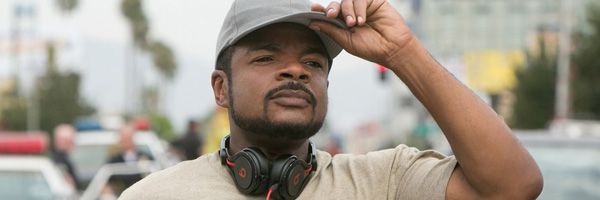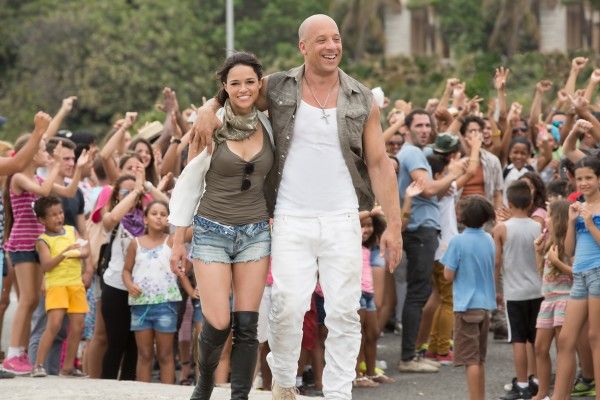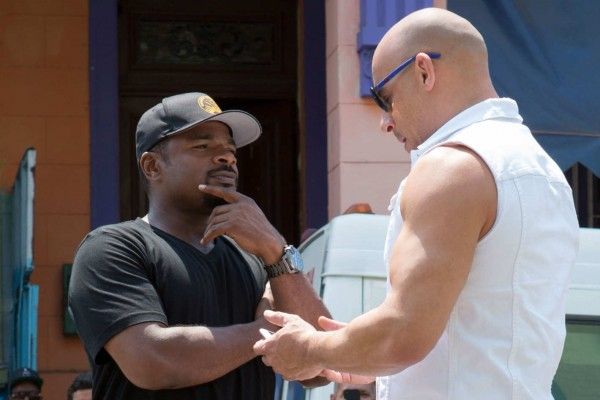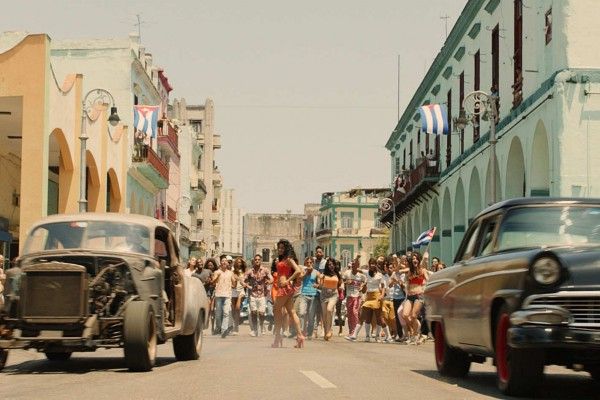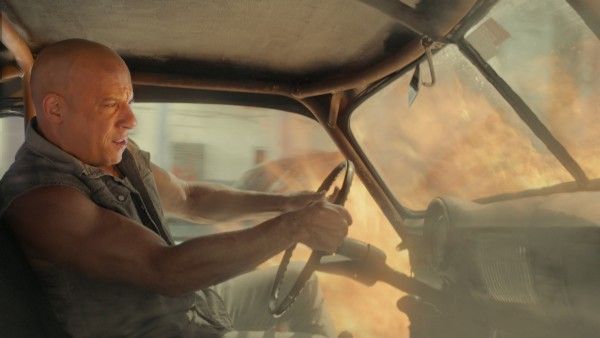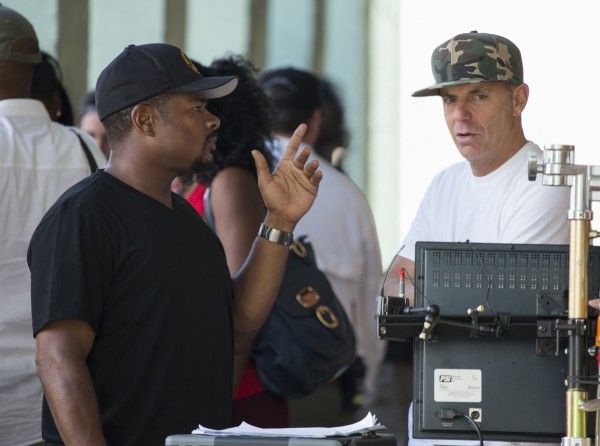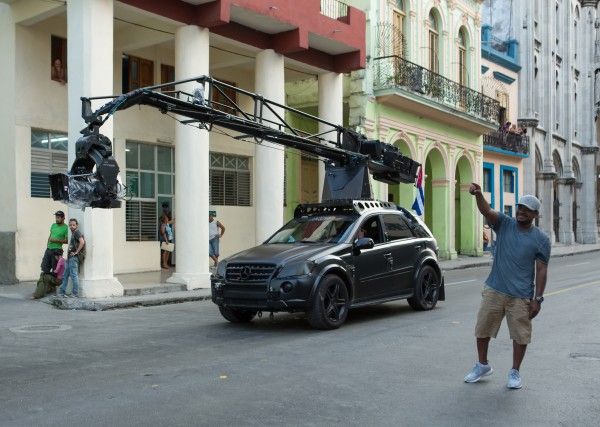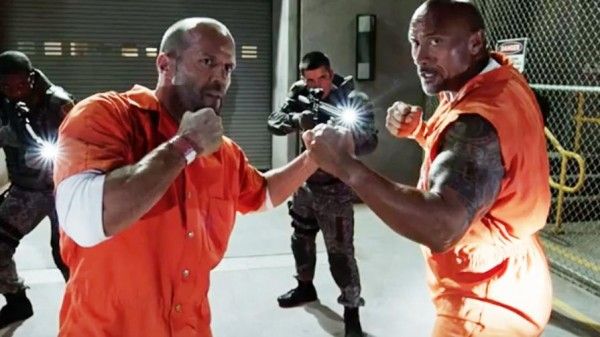When you sit down for a Fast and Furious movie, there are a few things you know come with the cost of admission. You're going to see fast cars and high-stakes heists, you're going to see big buff bald guys throwing punches at each other, and you're going to see the Fast family racing through exotic locations around the world. With Fate of the Furious, Straight Outta Compton director F. Gary Gray took the wheel and led the franchise through the bustling streets of Manhattan, the frozen expanses of Iceland (standing in for Arctic Russia), and made movie history as the first American blockbuster to the film in the streets of Havana, Cuba since the embargo was imposed in the late 1950s.
With Fate of the Furious now available on Blu-ray and VOD, I recently had the opportunity to travel to Havana, where I toured the filming locations and learned first-hand just how much technical coordination and on-the-ground effort went into filming the high-octane opening sequence, so I returned to the U.S. with a new sense of appreciation for what Gray and his production team pulled off. I also had the chance to jump on the phone with the director and get his perspective on being part of a landmark production, what he learned on the ground in Cuba, and why signing on to Fate of the Furious was such a gamble.
Gray landed Fate of the Furious on the heels of his breakout his Straight Outta Compton, but vehicular action wasn't exactly new territory. In fact, Gray's 2003 actioner The Italian Job, not only heavily featured car stunts, it teamed him with two of his Fate of the Furious stars, Charlize Theron and Jason Statham. But VFX and audience demands have evolved plenty over the last decade and the Furious franchise is always expected to be at the forefront of blockbuster spectacle. Additionally, Gray stepped into the franchise at a pivotal moment; the first film after the tragic death of franchise star Paul Walker and the first film in what writer Chris Morgan has labeled a new trilogy in the $5+ billion franchise. In short, the stakes were high.
"Of course, it was a gamble. If you think about it, nothing's ever guaranteed in our industry. That's one thing you learn after doing this for 25-plus years. You know that the stars have to align," said Gray. "No matter how good you think it is, it's a gamble. When you work with a franchise that's been around for 15-plus years and the big thing was making this movie without Paul Walker. I wouldn't say that everything stacked up in our favor to win. But I think with everyone-- actors, a great writer, it took all of us to make this thing work and we did. I was really relieved. I think we're all very hyper-aware of the fact that just because the first seven worked didn't automatically guarantee that eight was going to work."
And then, of course, there's the matter of filming in Cuba, a completely different kind of gamble but a risky one all the same. When you arrive in Havana, the effects of the nation's singular history are readily apparent. Much of what we take for granted, essentials of a modern film production, is in scarce supply. Wi-Fi is scarce and unreliable, bottled water is a must, and ordinary items can be hard to come by in shops. As a result, Fate of the Furious effectively transported in an entire production's worth of essentials, from filming equipment to basic supplies.
“They clearly don’t have the infrastructure to support a movie of this size,” Gray said. “We’re bringing in big-time actors and hundreds of crew and the technology we needed in order to shoot a tentpole movie. We brought in everything. I think we brought in everything from helicopters to a bottle of water.”
The payoff is in the texture of the films, endowing each new installment with a unique fingerprint amidst the franchise hallmarks and offering the audience an exciting journey with each film. "I think you gain a lot of capital with your audience and with the fans because you take your audience by the hand and you're taking them to places where they otherwise wouldn't have access to," Gray explained. "There's a trust you build with your audience and with your fans. A place like Cuba where most people around the world never have the chance to experience that place, you end up doing, in some cases, the impossible and the rare, and people really appreciate you for that. It's just another step in the relationship with the movie-goer." In a business that choses locations by the best tax break, the Furious films are always headed somewhere new. "I think a lot of times the complaints that I hear are that it just feels redundant what Hollywood does," Gray continued. "If you're able to deliver something different, I think the audience really appreciates it."
Havana is a natural fit for the franchise, thanks to a proud car culture. The streets of Havana are packed with muscle cars that would make Dom Toretto blush, framily heirlooms passed down and maintained through the generations with whatever parts and paint blends can be managed. "[It] was a surprise to be able to not only use the cars, but just to see how incredibly innovative they are in making and continuing to make these cars run. There's boat parts and motorcycle parts and refrigerator parts and things like that," Gray said. "It's a testament to the human spirit, man."
The experience also opened the director's eyes in other ways, "You also realize how much we take for granted," he said. "We're consumers by nature as customers, and a lot of stuff that we kill ourselves for we don't necessarily need. You find with going to cultures that don't necessarily have the access or the economy to be consumers like us, they end up having to be creative and I think it affects their way of life. In some ways, it's not necessarily positive but in a lot of ways, you can see how positive it is because ... The one thing I noticed when I landed back in the States is everyone's staring at their smartphones. We didn't run into that in Havana and in Cuba. Everyone's talking to each other, they're giving each other eye contact. It's more of an exchange between human beings. But you land in America, it's exchange between humans and technology, and you recognize that immediately."
Since the film's release, Fate of the Furious has soared to more than a billion dollars at the box office worldwide and Gray has landed himself a star on the Hollywood Walk of Fame – a moment that nearly brought Gray to tears. The gamble was definitely worth it. "With all of the hard nights, the food deprivation, all of the challenges you face with a movie of this size because of, you know, it's massive, I think that the biggest feeling I can say I'm feeling now is just relief. Just relief. I'm very grateful. I'm really happy I did it," Gray said. "You know, it's also like going to battle and you go through all the challenges and tribulations of a battle on the other end when you win because you say, "It's all worth it," because you learn a lot. You learn a lot about yourself, you learn a lot about the craft, about the business."
The Fate of the Furious is now available on Digital HD, 4K Ultra HD, Blu-ray, DVD and On Demand from Universal Pictures Home Entertainment.

